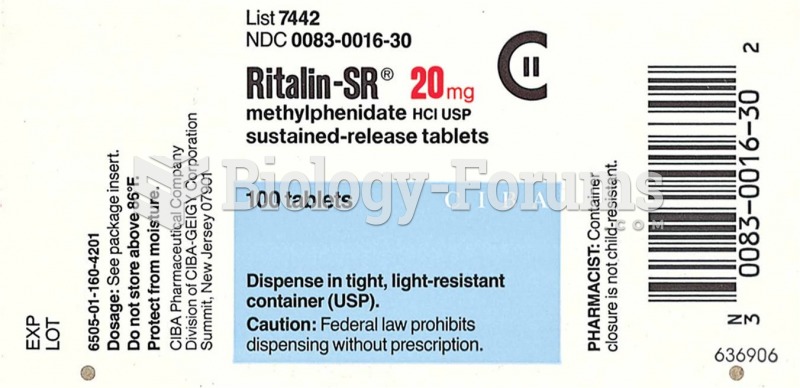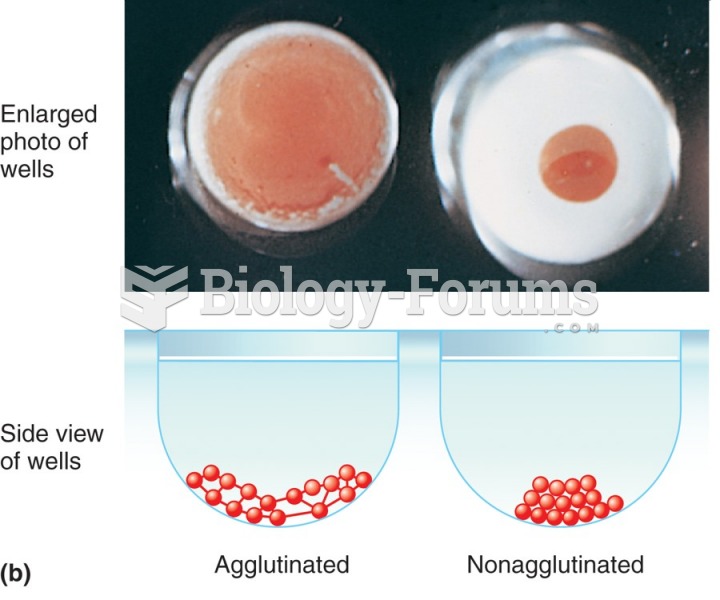|
|
|
Human kidneys will clean about 1 million gallons of blood in an average lifetime.
About 60% of newborn infants in the United States are jaundiced; that is, they look yellow. Kernicterus is a form of brain damage caused by excessive jaundice. When babies begin to be affected by excessive jaundice and begin to have brain damage, they become excessively lethargic.
When blood is deoxygenated and flowing back to the heart through the veins, it is dark reddish-blue in color. Blood in the arteries that is oxygenated and flowing out to the body is bright red. Whereas arterial blood comes out in spurts, venous blood flows.
If you use artificial sweeteners, such as cyclamates, your eyes may be more sensitive to light. Other factors that will make your eyes more sensitive to light include use of antibiotics, oral contraceptives, hypertension medications, diuretics, and antidiabetic medications.
The first oncogene was discovered in 1970 and was termed SRC (pronounced "SARK").
 Rhytidoplasty. This is a common form of plastic surgery in which the skin is pulled and sutured to d
Rhytidoplasty. This is a common form of plastic surgery in which the skin is pulled and sutured to d
 Examples of USP labels Source: Courtesy of Novartis Pharmaceuticals Corporation and Mallinckrodt Pha
Examples of USP labels Source: Courtesy of Novartis Pharmaceuticals Corporation and Mallinckrodt Pha
 Intradermal drug administration: (b) the administration site is prepped Source: Pearson Education/PH
Intradermal drug administration: (b) the administration site is prepped Source: Pearson Education/PH




